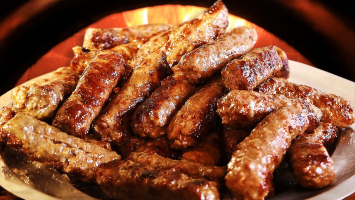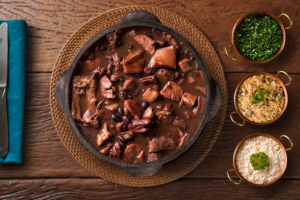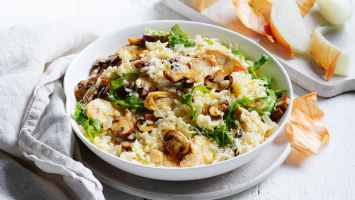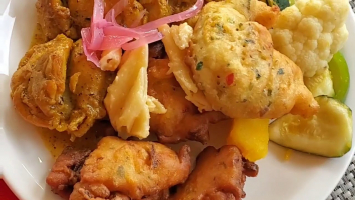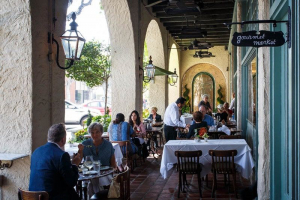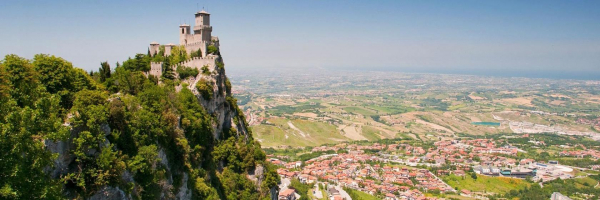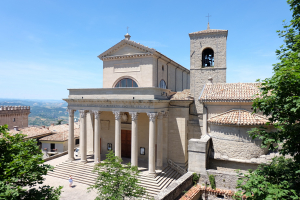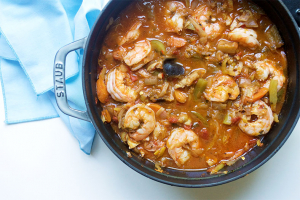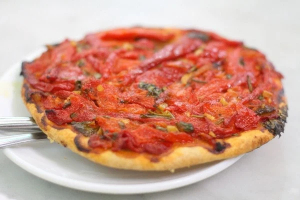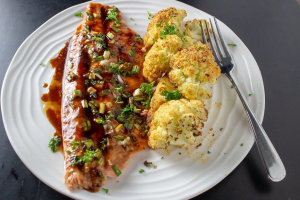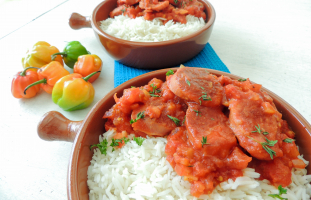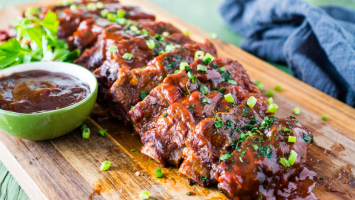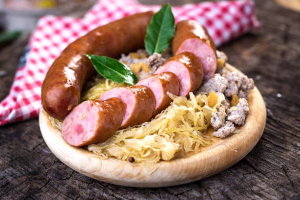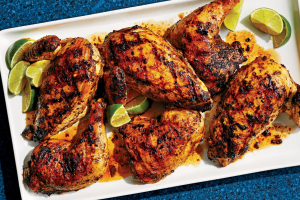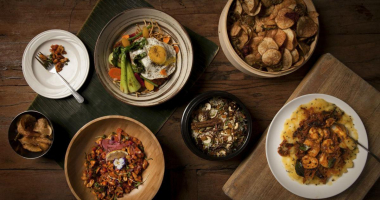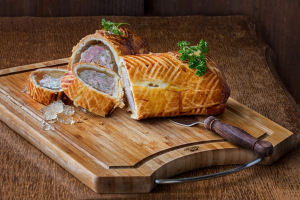Top 5 Best Foods In San Marino With Recipe
San Marino is a country in southern Europe known for its medieval architecture and delectable food. This country is bordered on all sides by Italy. As a ... read more...result, Italian cuisine has influenced San Marino's cuisine. Sammarinese cuisine employs a wide range of herbs and spices. San Marino residents are passionate about a variety of meats, including beef, rabbit, pork, and others. Let us have a look at some Sammarinese delights.
-
Torta tre monti is a delectable cake with multiple layers that is popular throughout Europe. Hazelnut cream, chocolate, and other ingredients are featured in this wafer cake. Because this classic Sammarinese treat depicts three San Marino towers, the dish has been given such a distinctive moniker. The La Serenissima bakery should be visited when in San Marino. The Torta Tre Monti has been baked in this bakery since 1942. The cake will be served with a cup of hot coffee.
Ingredients
- 1 package Wafers, 1 cup Nutella, 2 cups Whipped Cream, 1 cup chocolate Icing, 1 pint gelato, 8 maraschino cherries
Instructions
- Open the package of waffled wafers and set aside
- mix together the nutella and whipped cream until well combined
- Spread the nutella cream over one waffled wafer and repeat with the other layers, leaving the top layer empty
- Frost the sides of the wafers with chocolate icing.
- Serve the Torta Tre Monti with a scoop of gelato and a cherry on top.
- Goes great with Espresso, Enjoy!
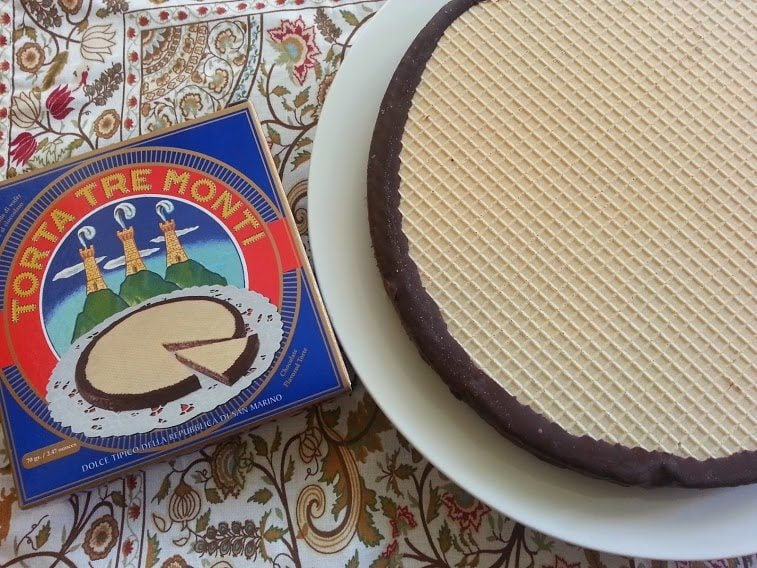
inmamamaggieskitchen.com 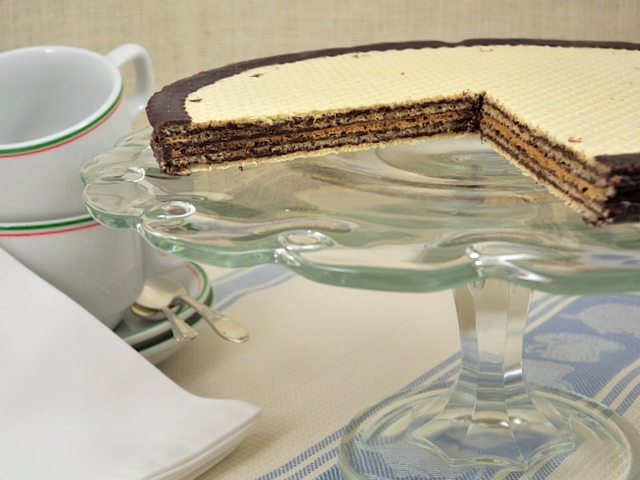
adribarrcrocetti.com -
Bustrengo (also known as bustrenga, bustrèng, or bostrengo) is a year-round cake from San Marino and Emilia Romagna that is also a traditional Christmas cake. Christmas cakes with fresh or dried fruits are popular in many countries. Panettone, also Italian but from Milan, as well as stollen from Germany and bara brith from the United Kingdom, are some prominent examples. In some countries, such as France, these fruit desserts are simply referred to as "Christmas cake" or "cake." Bustrengo was traditionally baked in a hearth, in a typical copper pot with a concave lid containing hot coals, allowing the cake to bake evenly on all sides. Because bustrengo is dense, it's normally served in small pieces with a shot of sweet wine.
Ingredients
- ½ cup cornmeal, 2 cups flour, 1½ cup bread crumbs, ½ teaspoon salt, 3 eggs, 3 tablespoons olive oil, 2 cups milk, 5 tablespoons honey, 1 lb apples , peeled, cored and diced, 3 oz. dried figs , diced, 3 oz. raisins, Zest of a lemon , grated, Zest of an orange , grated
Instructions
- Preheat oven to 325F/160C. Grease a 9x13 inch (20x30cm) baking dish.
- Mix cornmeal, flour, breadcrumbs, salt, eggs and oil.
- Stir in milk and honey.
- Add the diced apples, dried figs, raisins and zests, stirring gently.
- Bake for 50 to 60 minutes.
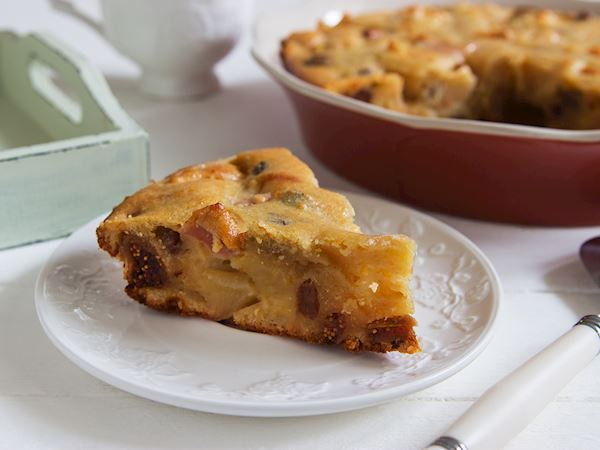
tasteatlas.com 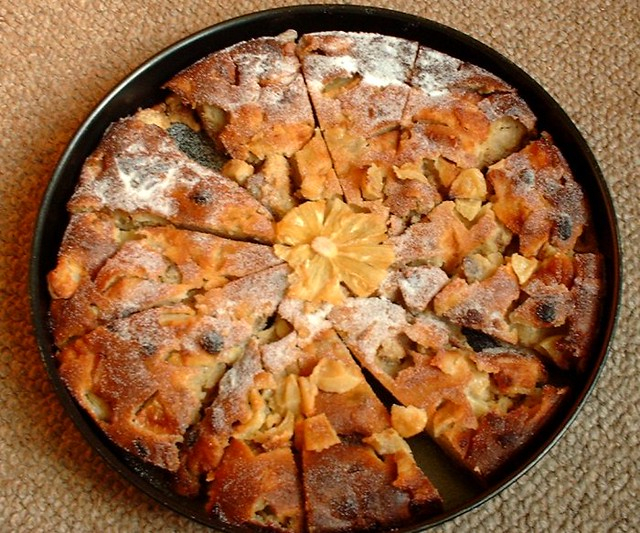
gordon-ramsay-recipe.com -
Cappelletti are a sort of packed fresh pasta that originated in the Emilia-Romagna area of northern Italy, namely in the towns of Modena and Bologna. They may be traced back to the Middle Ages, when they were a delicacy on the tables of nobility. Their circular shape gives them the name cappelletti, which means "little hats." Cappelletti can be created from circles or squares of dough, which somewhat alters their shape, but the folding procedure remains the same. They're usually served in a meat broth, but they can also be tossed in melted butter with fresh sage, in a meat sauce, in slowly cooked heavy cream, with a simple walnut sauce, or in a meat sauce.
Ingredients
- For the Filling: 1 tablespoon unsalted butter, 1/2 chicken breast, or 4 ounces lean pork, 1 cup fresh ricotta cheese, 1/2 cup freshly grated Parmigiano-Reggiano cheese, 1 large egg, 1 large egg yolk, 1 pinch freshly grated nutmeg, 1 pinch lemon zest, optional, 1 pinch fine sea salt, 1 pinch freshly ground black pepper
- For the Pasta: 2 1/4 cups all-purpose flour, 3 large eggs, 1 pinch sea salt
Instructions
- Gather the ingredients.
- In a small saucepan, melt the butter and sauté the chicken.
- Let cool and then cut into small chunks.
- Using a food processor or blender, combine the sautéed chicken, ricotta cheese, Parmigiano-Reggiano, whole egg, egg yolk, nutmeg, lemon zest (if using), and salt and pepper to form a fine paste. (If the ricotta is very soft, leave out the egg white and use just 2 yolks instead. If, on the other hand, the mixture is too stiff, add an extra egg yolk.)
- Make the Pasta
- Make a mound with the flour on your work surface and form a well in the middle.
- Crack the eggs into the center of the well and add the salt.
- Work the eggs and the flour together with your hands until you have a smooth dough, adding just a few drops of water, if necessary, and no more.Knead the dough for 10 to 15 minutes, until it is smooth, firm, and quite elastic. Don't skimp on the kneading or the dough will tear while you're rolling it out.
- Separate the dough into 2 pieces.
- Flour your work surface (marble countertops are ideal for this, though wood or Formica work as well) and start to roll out the dough, rolling out from the middle, flipping it over occasionally, and flouring it as necessary to keep it from sticking.
- Keep on flipping and rolling until you have a sheet that's almost transparent—as thin as a dime or thinner if you can manage it, as the pasta will almost double in thickness while cooking.
- Shape the Cappelletti
- Once you've rolled out a thin sheet of pasta on a well-floured surface, use a round cookie cutter (you could also use a round or square raviolo stamp or a fluted-edge rolling pasta cutter) to cut out 2-inch-diameter circles of dough.
- Place 1 level teaspoon of stuffing in the middle of each circle.
- Using your fingertip or a pastry brush, moisten the edges of the circle with a little water so they will seal.
- Fold the circles in half over the filling to form half moons, pressing down with your fingers to seal the edge.
- Then pull the two corners towards each other, overlapping one over the other, and press down on the tips to help them adhere together.
- Continue until all of the cappelletti are made.
- Boil the pasta in either broth or water for 3 to 5 minutes, depending on how you'd like to serve the cappelletti, and serve.
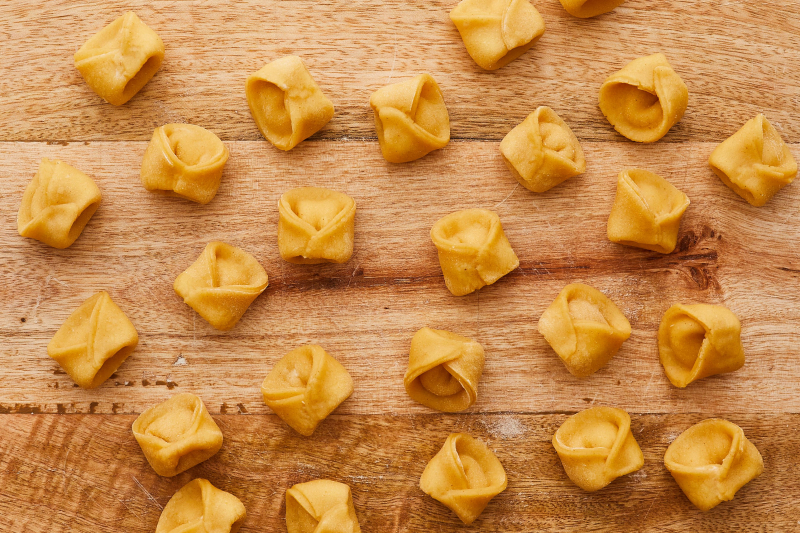
thespruceeats.com 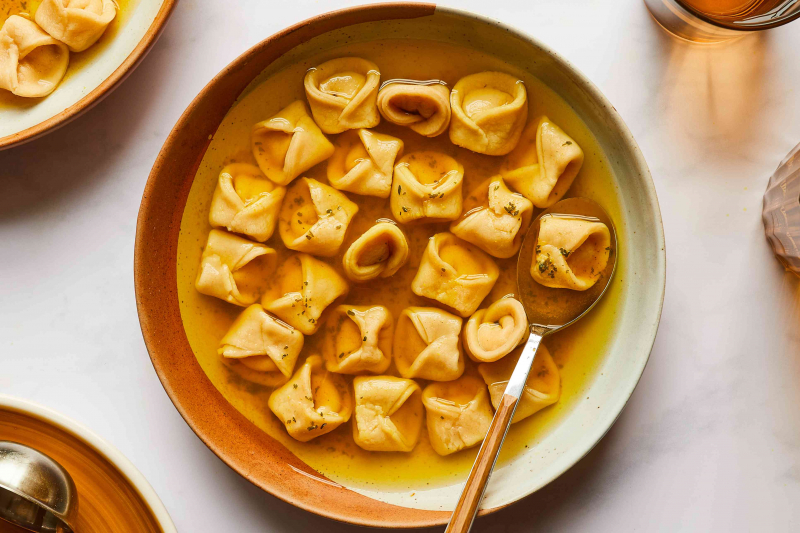
thespruceeats.com -
This is a traditional pasta dish that is quite popular in San Marino. The dish is enhanced by the addition of meat sauce, cheese, and other ingredients by the local cooks. This Strozzapreti also includes seasoned veggies. Apart from these, flour, water, salt, and meat are required to make this delectable Strozzapreti.
Ingredients
- Option 1: All-purpose flour: 2 1/3 cups all-purpose flour (310 grams), plus more for dusting, 3/4 cup plus 1 tablespoon water
- Option 2: ‘00’ flour: 2 1/3 cups ‘00’ flour (304 grams), plus more for dusting, 3/4 cup water
- Option 3: Semolina blend, 1 3/4 cups all-purpose or ‘00’ flour (233 grams), plus more for dusting, 1/3 cup semolina flour (55 grams), 3/4 cup water
- For cooking: Salt, for the cooking water
Instructions
- Sift the flour. Sift the flour(s) through a fine-mesh strainer into a mound on a work surface.
- Create a well. Make a well in the center of the mound about 6 inches wide with sides high enough to hold the water in the center. Gently pour 3/4 cup water into the well.
- Incorporate some of the flour into the water. Using a fork, gently whisk some of the flour next to the water into the water until the mixture looks like thick pancake batter.
- Finish combining the flour and water. Once the mixture is too thick to whisk anymore, use your hands or a bench scraper to finish folding the dry flour into the dough. Working from the outside in, fold the flour into the wet dough mixture until everything is completely combined into a shaggy dough. If the mixture is too dry, wet your hands and continue kneading.
- Knead the dough. Pull the top edge of the dough over the center and press down with the palm of your hand. Rotate the dough by a quarter of a turn and repeat. Repeat until you have a rough, slightly shaggy ball of dough, about 5 minutes.
- Check the dough for moisture. If the dough still appears dry on the outside, wet your hands and continue to knead until the dough is smooth with light lumps on the outside, about 5 minutes more. Press the dough with your finger, it should gently bounce back. (Alternatively, if the dough appears too wet, then dust some flour.)
- Wrap the dough and let it rest. Wrap the dough in plastic wrap and let rest at room temperature for 15 to 20 minutes. Meanwhile, clean up the work surface.
- Divide the dough. Generously dust the work surface with flour. Unwrap the dough and cut it in half with a knife or bench scraper. Rewrap one piece in the plastic wrap while you roll out the other.
- Roll the dough. Using a rolling pin, roll the dough until very thin, about the thickness of 6 to 8 stacked sheets of paper (about 3 mm). The shape doesn’t matter, but it can be rolled into a rough 10x16-inch rectangle.
- Cut dough into strips. Using a pastry, pizza wheel, or sharp knife, cut the dough into 1-inch wide strips. Cover the strips with plastic wrap while you twist the pasta one strip at a time.
- Twist the pasta. Line 2 baking sheets with parchment paper and lightly dust with flour. Working one strip at a time, gently pull the strip from the work surface. Using your non-dominant hand, gently pinch the strip about 3 inches from one end. Using your dominant hand, gently twist the strip as much as you can until you have about a 2-inch long twisted piece of pasta. Remove the twist from the rest of the strip with a pinch and twist motion, then place it on the baking sheet. Repeat with the rest of the strip, then repeat with the remaining strips, placing the strips in a single layer on the baking sheet. Let pasta dry on the baking sheet for 10 minutes. (The strozzapretti can be frozen on the baking sheet at this point.)
- Repeat with the remaining dough. Repeat rolling, cutting, and shaping the remaining piece of dough, placing it on the second baking sheet.
- Cook the pasta. Fill a large pot with water, bring to a boil and season generously with salt. Add the pasta and cook until just al dente, 3 to 4 minutes. Drain and serve with your favorite sauce.
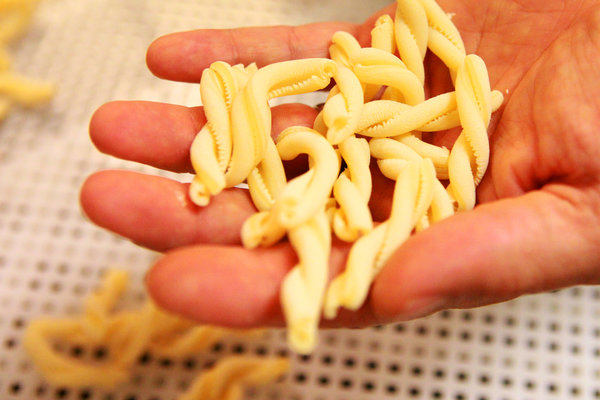
cooking.nytimes.com 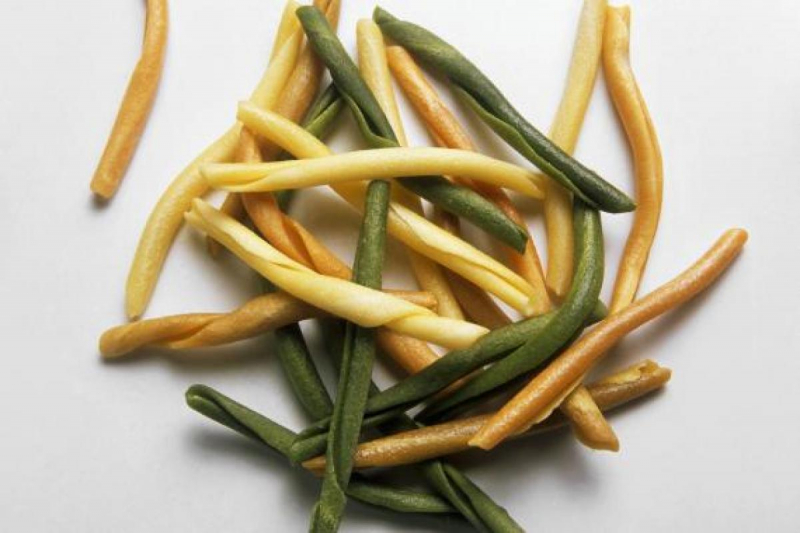
finedininglovers.com -
This is nothing more than a pasta casserole dish. San Marino's chefs top Nidi di Rondine with a variety of ingredients. Bechamel sauce, prosciutto, basil, Italian cheese, and so on are examples. San Marino residents use this spaghetti casserole to form cylindrical buns. If you're making the Nidi di Rondine from scratch, remove it from the oven after the crust is brown and crispy.
Ingredients
- 1/2 batch homemade pasta dough , or store bought sheets of fresh lasagna, Bechamel sauce, 2 Tbsp butter, 3 Tbsp all-purpose flour, 1 1/2 cups milk, 1/8 tsp nutmeg, salt
- Filling: 8-10 oz ham , thin slices, 8-10 oz mozarella very thin slices, 1/2 cup Parmesan , to spoon on top of each nest, 2-3 Tbsp olive oil
Instructions
- Start by making the homemade pasta. Set it aside to rest for 20 minutes. Meanwhile, make the bechamel: melt the butter in a pot. Whisk in the flour and nutmeg until completely combined, then whisk together with a little milk. Keep adding milk a little at a time until a smooth, thick sauce forms. Set aside.
- Next, roll out the pasta dough into a large rectangle (remember we’re just using half a batch)… My rectangle was about 14″x21″ or so (bigger is fine). Top with half the bechamel sauce… then ham, then cheese. Tip – use really thin slices of cheese…have the deli counter slice it for you.
- Then roll up into a long tube. Freeze for about 30 minutes (this will make it so easy to slice). If you need to slice it in half to fit in your freezer, go for it.
- Preheat the oven to 325F and oil a casserole liberally. Spoon in the remaining half of the bechamel sauce. Remove the pasta roll from the freezer and slice to make individual nests. The best way to make them equal sized is to slice the roll in half, then half again, and so on. (mine ended up being about 1 1/2 inches high).
- Brush the sides with olive oil so they don’t stick to each other and then place, cut side up in the casserole. Top with 1/2-1 tsp grated Parmesan per spiral and bake at 325F for 45-50 min
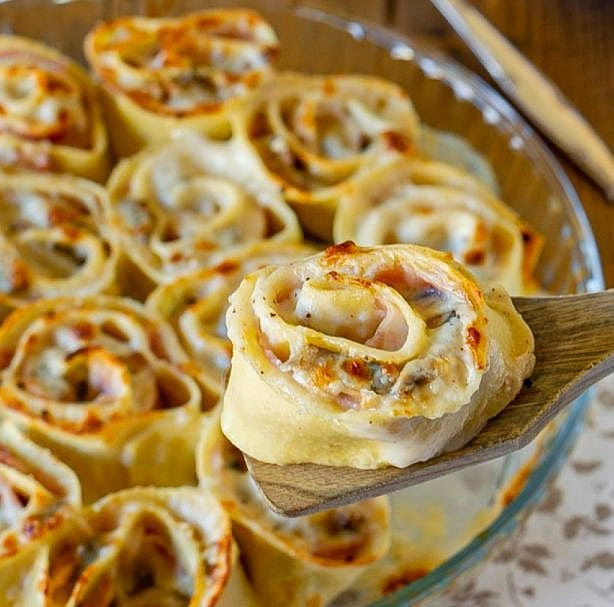
facebook.com 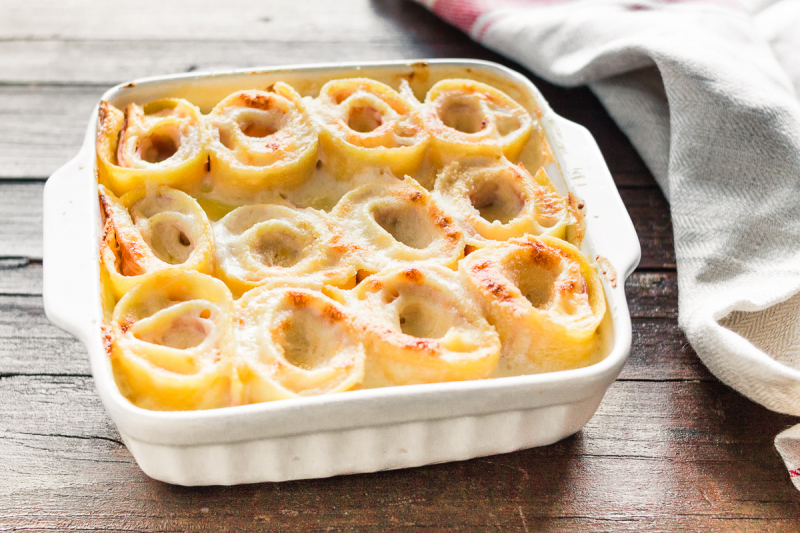
blog.giallozafferano.it







